| XP-7 | |
|---|---|
 | |
| Role | Experimental Fighter |
| Manufacturer | Boeing |
| First flight | September 1928 [1] |
| Primary user | United States Army Air Corps |
| Number built | 1 |
| Developed from | Boeing PW-9D |
The Boeing XP-7 was a prototype United States biplane fighter of the 1920s.
| XP-7 | |
|---|---|
 | |
| Role | Experimental Fighter |
| Manufacturer | Boeing |
| First flight | September 1928 [1] |
| Primary user | United States Army Air Corps |
| Number built | 1 |
| Developed from | Boeing PW-9D |
The Boeing XP-7 was a prototype United States biplane fighter of the 1920s.
The XP-7 started life as the last Boeing Model 15 (PW-9D), serial 28-41. It was then adapted to mount the 600 hp Curtiss V-1570 Conqueror engine. Labelled by Boeing as their Model 93, the XP-7's nose was shorter and deeper than that of the standard PW-9, and the craft was 75 pounds lighter overall.
It first flew in September 1928 and did well, with a 17 mph speed increase over the PW-9. However, despite a proposal to build an additional four P-7s, the design was at the very limits of its capabilities and somewhat outdated even by the time of its first flight. At the end of testing, the Conqueror engine was removed and the aircraft converted back into a PW-9D. [1]
Data from [1]
General characteristics
Performance
Armament
Related lists

The Curtiss A-8 was a low-wing monoplane ground-attack aircraft built by the United States company Curtiss Aeroplane and Motor Company, designed in response to a 1929 United States Army Air Corps requirement for an attack aircraft to replace the A-3 Falcon. The Model 59 "Shrike" was designated XA-8.

The Curtiss P-6 Hawk is an American single-engine biplane fighter introduced into service in the late 1920s with the United States Army Air Corps and operated until the late 1930s prior to the outbreak of World War II.
The P-1 Hawk was a 1920s open-cockpit biplane fighter aircraft of the United States Army Air Corps. An earlier variant of the same aircraft had been designated PW-8 prior to 1925.

The Boeing YB-9 was the first all-metal monoplane bomber aircraft designed for the United States Army Air Corps. The YB-9 was an enlarged alteration of Boeing's Model 200 Monomail commercial transport.

The Curtiss XP-71 was a 1941 proposal for an American advanced heavy escort fighter aircraft.
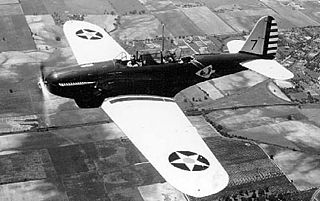
The Consolidated P-30 (PB-2) was a 1930s United States two-seat fighter aircraft. An attack version called the A-11 was also built, along with two Y1P-25 prototypes and YP-27, Y1P-28, and XP-33 proposals. The P-30 is significant for being the first fighter in United States Army Air Corps service to have retractable landing gear, an enclosed and heated cockpit for the pilot, and an exhaust-driven turbo-supercharger for altitude operation.
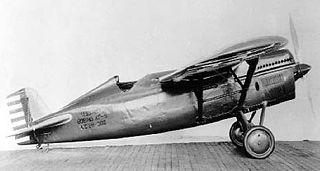
The Boeing XP-9 was the first monoplane fighter aircraft produced by the United States aircraft manufacturing company Boeing. It incorporated sophisticated structural refinements that were influential in later Boeing designs. The sole prototype exhibited unsatisfactory characteristics with its lack of pilot visibility directly leading to its cancellation.

The Boeing Model 15 was a United States single-seat open-cockpit biplane fighter aircraft of the 1920s, manufactured by the Boeing company. The Model 15 saw service with the United States Army Air Service and with the United States Navy as a carrier-based fighter.

The Boeing XF6B-1 / XBFB-1 was Boeing's last biplane design for the United States Navy. Only the one prototype, Model 236, was ever built; although first flying in early 1933, it rammed into a crash barrier in 1936 and the design was not pursued further.

The Boeing XP-4 was a prototype United States biplane fighter of the 1920s that was grounded permanently after just 4.5 hours of flight testing.
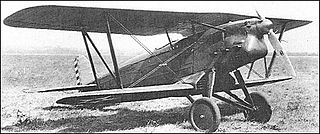
The Boeing XP-8 was a prototype American biplane fighter of the 1920s, notable for its unusual design incorporating the engine radiator into the lower wing.
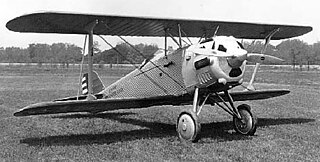
The XP-13 Viper was a prototype biplane fighter aircraft designed by the American company Thomas-Morse Aircraft Corporation. The airplane was delivered to the United States Army in 1929, but they did not adopt it.

The Boeing XP-15 was a prototype monoplane fighter of the United States, the second to be designated a pursuit type, after the Boeing XP-9.
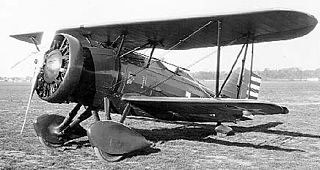
The Curtiss YP-20 was an American biplane fighter project developed by Curtiss for the United States Army Air Service.

The Curtiss XP-10 was an American experimental biplane fighter developed by Curtiss and tested by the United States Army Air Corps, but rejected due to disappointing performance and major problems with the cooling system.

The Curtiss XP-22 Hawk was a 1930s American experimental biplane fighter built by Curtiss for evaluation by the United States Army Air Service.

The Curtiss XP-31 Swift was a 1930s American experimental monoplane fighter built by Curtiss for the United States Army Air Corps.
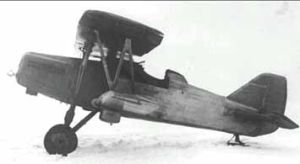
The Tupolev I-8 was an experimental interceptor built in the Soviet Union in the early 1930s. It was the first Soviet aircraft to exceed 300 km/h in level flight. The aircraft was an exercise in developing the Polikarpov I-5 design by a group of engineers led by V. M. Rodionov, each of whom volunteered 70 hours of personal time to the project.

The Orenco D was an American biplane fighter aircraft, designed by Orenco and built by Curtiss Aeroplane and Motor Company. It was the first fighter type of completely indigenous design to enter US military service.

The Thomas-Morse TM-24 was a prototype American two-seat observation aircraft of the 1920s. A single example was built in 1925, but no production followed.
| Wikimedia Commons has media related to Boeing XP-7 . |